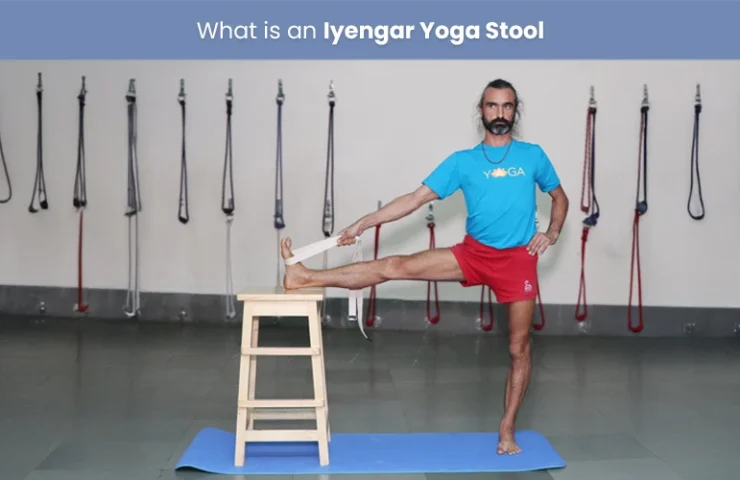The headstand, also known as Sirsasana in Sanskrit, is an inversion pose that offers a multitude of benefits for both body and mind. It might seem intimidating at first, but with proper preparation and practice, anyone can learn to achieve this rewarding pose.
Benefits of Headstands
The headstand is a powerhouse of benefits. It strengthens the shoulders, arms, and core, promoting overall stability and posture. It improves circulation, bringing fresh blood flow to the brain which can enhance focus and mental clarity. Additionally, headstands can stimulate the lymphatic system, aiding in detoxification. On a deeper level, this inversion pose is said to calm the mind and promote relaxation.
Warming Up: Preliminary Poses for Headstand
Before diving into a headstand, it’s crucial to prepare your body with some warm-up poses:
- Downward-Facing Dog (Adho Mukha Svanasana): This pose stretches the hamstrings, calves, and spine, creating space in the body.
- Dolphin Pose (Ardha Pincha Mayurasana): Similar to Downward-Facing Dog, but with forearms on the mat, this pose strengthens the shoulders and wrists.
- Plough Pose (Halasana): This gentle inversion prepares the neck and shoulders for the headstand.
- Child’s Pose (Balasana): Resting in Child’s Pose helps calm the mind and focus on your breath before attempting the headstand.
Conquering the Crown: How to Do a Headstand
- Find Your Base: Interlace your fingers, creating a cradle with your forearms. Forearms should be shoulder-width apart. Place the crown of your head on the mat, interlocking your pinky fingers for extra stability.
- Engage Your Core: Tuck your chin to your chest and lift your hips, straightening your legs. Engage your core to draw your navel in towards your spine.
- Balance and Lift: Slowly walk your feet towards your head, keeping your core strong. As your hips reach over your shoulders, straighten your legs one by one, gazing at your toes for balance.
- Maintain Control: Hold the pose for a few breaths, engaging your core and pressing firmly into your forearms. Breathe deeply and avoid straining your neck.
Tips:
- Focus on a single point to maintain balance.
- Keep your core engaged throughout the pose.
- Don’t force the pose if you feel any discomfort.
Gentle Descent: Coming Out of a Headstand Safely
- Bend the Knees: Slowly bend your knees, bringing your shins towards your chest.
- Lower Yourself: Lower your feet one at a time back to the mat, keeping your core engaged.
- Rest and Relax: Relax in Child’s Pose for a few breaths to ease your body out of the inversion.
Tips:
- Come out of the pose slowly and with control.
- Avoid dropping from the headstand abruptly.
Facing Your Fears: Challenges and Solutions in Headstands
Common challenges in headstands include fear of falling, neck strain, and difficulty balancing. Here’s how to overcome these obstacles:
- Fear of Falling: Practice near a wall for support initially. As you gain confidence, gradually move away from the wall.
- Neck Strain: Ensure proper head placement on the mat, avoiding any pressure on the neck itself. Engage your core to support the head.
- Balancing: Start by practicing Dolphin Pose to strengthen your shoulders and core, crucial for balance in a headstand.
Why use a Headstand Bench?
A headstand bench can be a valuable tool, especially for beginners. It provides support for your upper back and shoulders, making it easier to find your balance and alignment. This allows you to focus on core engagement and leg extension without worrying about tipping over. As you gain confidence, you can gradually progress to performing headstands without the bench.
By incorporating these steps, overcoming challenges, and considering the use of a headstand bench, you’ll be well on your way to mastering Sirsasana and reaping all the benefits this powerful pose has to offer. Remember, practice makes perfect, so be patient, listen to your body, and enjoy the journey towards headstand bliss!
Contraindications
While the headstand bench is generally safe, it’s important to be aware of potential contraindications:
- Neck or back injuries: Individuals with severe neck or back injuries should avoid using a headstand bench.
- High blood pressure: The inverted position can increase blood pressure.
- Glaucoma: People with glaucoma should avoid inversions.
- Pregnancy: Pregnant women should consult with their healthcare provider before using a headstand bench, as some poses may not be suitable.
- Weak wrists or shoulders: The bench can put strain on these joints, so proceed with caution if you have weakness or injuries.
Remember to consult with a healthcare professional or a qualified yoga teacher before incorporating a headstand bench into your practice.






0 Comments for “Mastering the King of Yoga Poses: How to Do a Headstand (Sirsasana)”